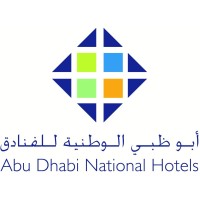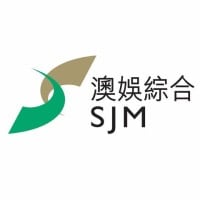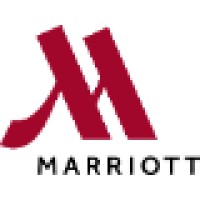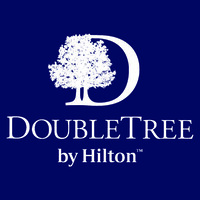
Abu Dhabi National Hotels Company Cyber Security Posture
adnh.comAbu Dhabi National Hotels (ADNH) was founded in 1976 as a hotel owner and asset manager. Over the years, it has evolved into a comprehensive hospitality group, offering a wide range of services including hotels, restaurants, destination management, catering, and transportation. Under its Hotels Division, ADNH owns some of the most reputable and recognizable hotels in the Emirate and beyond. These include The Ritz Carlton Abu Dhabi, Grand Canal; Park Hyatt Abu Dhabi Hotel and Villas; Sheraton Abu Dhabi Hotel & Resort; Le Meridien Abu Dhabi; Radisson Blu Hotel & Resort Al Ain; Radisson Blu Hotel & Resort Abu Dhabi, Corniche; Sofitel Dubai Jumeirah Beach; Kempinski The Boulevard Dubai; Kempinski Central Avenue Dubai; JW Marriott Hotel Marina; Hotel Boulevard, Autograph Collection; and The Heritage Hotel, Autograph Collection. ADNH has also developed an operator division, managing a portfolio of hotels and hotel apartments in prime city locations, including the Radisson Blu Hotel Ajman and properties under the Al Diar Hotels brand. Additionally, ADNH’s other hospitality divisions encompass ADNH Catering, several Em Sherif Restaurants, High Spirits, Al Ghazal Transport, Sunshine Travel & Tours, National Facility Management Company by ADNH, M Five Services, and Abu Dhabi National General Security Guard Co. L.L.C.
ADNH Company Details
abu-dhabi-national-hotels
10,001+ employees
0
721
Hospitality
adnh.com
Scan still pending
ABU_2051743
In-progress
Between 900 and 1000
This score is AI-generated and less favored by cyber insurers, who prefer the TPRM score.
 ADNH Global Score
ADNH Global Score.png)

Abu Dhabi National Hotels Company Scoring based on AI Models
| Model Name | Date | Description | Current Score Difference | Score |
|---|---|---|---|---|
| AVERAGE-Industry | 03-12-2025 | This score represents the average cybersecurity rating of companies already scanned within the same industry. It provides a benchmark to compare an individual company's security posture against its industry peers. | N/A | Between 900 and 1000 |
Abu Dhabi National Hotels Company Cyber Security News & History
| Entity | Type | Severity | Impact | Seen | Url ID | Details | View |
|---|
Abu Dhabi National Hotels Company Subsidiaries

Abu Dhabi National Hotels (ADNH) was founded in 1976 as a hotel owner and asset manager. Over the years, it has evolved into a comprehensive hospitality group, offering a wide range of services including hotels, restaurants, destination management, catering, and transportation. Under its Hotels Division, ADNH owns some of the most reputable and recognizable hotels in the Emirate and beyond. These include The Ritz Carlton Abu Dhabi, Grand Canal; Park Hyatt Abu Dhabi Hotel and Villas; Sheraton Abu Dhabi Hotel & Resort; Le Meridien Abu Dhabi; Radisson Blu Hotel & Resort Al Ain; Radisson Blu Hotel & Resort Abu Dhabi, Corniche; Sofitel Dubai Jumeirah Beach; Kempinski The Boulevard Dubai; Kempinski Central Avenue Dubai; JW Marriott Hotel Marina; Hotel Boulevard, Autograph Collection; and The Heritage Hotel, Autograph Collection. ADNH has also developed an operator division, managing a portfolio of hotels and hotel apartments in prime city locations, including the Radisson Blu Hotel Ajman and properties under the Al Diar Hotels brand. Additionally, ADNH’s other hospitality divisions encompass ADNH Catering, several Em Sherif Restaurants, High Spirits, Al Ghazal Transport, Sunshine Travel & Tours, National Facility Management Company by ADNH, M Five Services, and Abu Dhabi National General Security Guard Co. L.L.C.
Access Data Using Our API

Get company history
.png)
ADNH Cyber Security News
New Jersey and UAE sign pact to boost cyber security and consumer protection in gaming
Governor Phil Murphy said UAE partnership will bolster innovation.
Abu Dhabi to launch city-wide face recognition system in hotels
This announcement marks the first government-led initiative in Abu Dhabi to introduce face recognition technology in partnership with hotels, ...
DCT – Abu Dhabi launches emirate-wide face recognition system in hotels
This marks the first government-led initiative in Abu Dhabi to introduce face recognition technology in partnership with hotels, highlighting a ...
Abu Dhabi National Hotels launches IPO of catering unit
Abu Dhabi National Hotels launches IPO of catering unit · Why sign uP · Why sign uP · Related content: · Trending · Latest articles. The Omani ...
UAE Stocks: Agility Public Warehousing, Abu Dhabi National Hotels
Lulu Retail is again the biggest faller, off another 9.6% suggesting that “limit down” triggers have been hit again. Investors continue to mark ...
Cyber Security Council, DoH boost cyber resilience in healthcare
This drill represents a critical step in enhancing cyber resilience in the healthcare sector, which remains a primary target for cyberattacks ...
UAE launches cybersecurity center of excellence in collaboration with Google Cloud
This strategic collaboration with Google Cloud is a cornerstone of the UAE's vision to become a global cybersecurity leader.
Abu Dhabi's Cyber Security Council, DoH strengthen healthcare cybersecurity with comprehensive drill
The Department of Health – Abu Dhabi (DoH), in collaboration with the UAE Cyber Security Council, has executed a cybersecurity healthcare.
Abu Dhabi’s Adtic invests with Accor in Egyptian hotel
AGBI registered members can access even more of our unique analysis and perspective on business and economics in the Middle East. Why sign uP.

ADNH Similar Companies

Minor Hotels Europe and Americas
Minor Hotels is a global hospitality leader with a network of more than 560 hotels across six continents. We drive growth through eight diverse hotel brands and a portfolio of related hospitality businesses. Perpetually driven by an entrepreneurial spirit, we create better brands, businesses and p

SJM Resorts
SJM Resorts, S.A. ("SJM") is one of the six concessionaires in Macau, authorised by the Government of the Macau Special Administrative Region to operate casinos and gaming areas. SJM is also the only casino gaming concessionaire with its roots in Macau. SJM owns and operates the Grand Lisboa Palace

Marriott Hotels
With over 500 properties worldwide, Marriott Hotels has reimagined hospitality to exceed the expectations of business, group, and leisure travelers. Marriott Hotels, Marriott’s flagship brand of quality-tier, full-service hotels and resorts, provides consistent, dependable and genuinely caring

IHG Hotels & Resorts
IHG Hotels & Resorts [LON:IHG, NYSE:IHG (ADRs)] is a global hospitality company, with a purpose to provide True Hospitality for Good. With a family of 19 hotel brands and IHG One Rewards, one of the world's largest hotel loyalty programmes, IHG has over 6,300 open hotels in more than 100 countries,

Carlson Hotels "Park Plaza, Chandigarh
A full-service, upper midscale hotel brand for business and leisure travelers, Park Plaza® offers award-winning meeting facilities and staff who live the brand’s value proposition by going out of their way to show their appreciation to their guests. Park Plaza® hotels are located in city centers

DoubleTree by Hilton
DoubleTree by Hilton hotels are distinctively designed properties that provide true comfort to today’s business and leisure travelers. From the millions of delighted hotel guests who are welcomed with the brand’s legendary, warm chocolate chip cookies at check-in to the advantages of the award-winni

Frequently Asked Questions
Explore insights on cybersecurity incidents, risk posture, and Rankiteo's assessments.
ADNH CyberSecurity History Information
How many cyber incidents has ADNH faced?
Total Incidents: According to Rankiteo, ADNH has faced 0 incidents in the past.
What types of cybersecurity incidents have occurred at ADNH?
Incident Types: The types of cybersecurity incidents that have occurred include .
Incident Details
What are the most common types of attacks the company has faced?
Additional Questions
What Do We Measure?
















Every week, Rankiteo analyzes billions of signals to give organizations a sharper, faster view of emerging risks. With deeper, more actionable intelligence at their fingertips, security teams can outpace threat actors, respond instantly to Zero-Day attacks, and dramatically shrink their risk exposure window.
These are some of the factors we use to calculate the overall score:
Identify exposed access points, detect misconfigured SSL certificates, and uncover vulnerabilities across the network infrastructure.
Gain visibility into the software components used within an organization to detect vulnerabilities, manage risk, and ensure supply chain security.
Monitor and manage all IT assets and their configurations to ensure accurate, real-time visibility across the company's technology environment.
Leverage real-time insights on active threats, malware campaigns, and emerging vulnerabilities to proactively defend against evolving cyberattacks.




